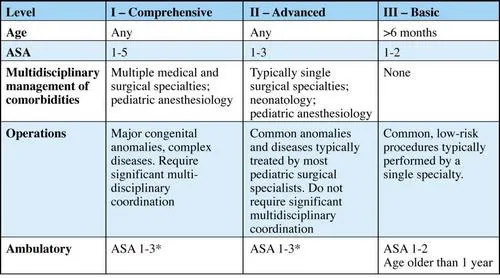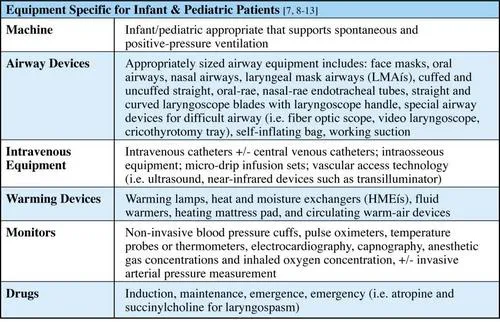
eBook - ePub
Anesthesia: Essential Clinical Updates for Practitioners – Regional, Ultrasound, Coagulation, Obstetrics and Pediatrics
Amballur D. John
This is a test
Partager le livre
- English
- ePUB (adapté aux mobiles)
- Disponible sur iOS et Android
eBook - ePub
Anesthesia: Essential Clinical Updates for Practitioners – Regional, Ultrasound, Coagulation, Obstetrics and Pediatrics
Amballur D. John
Détails du livre
Aperçu du livre
Table des matières
Citations
À propos de ce livre
This book provides a quick update on key aspects of current anesthesia practice. Book chapters are written in a concise manner to enable readers anesthesia providers and medical students to quickly refresh their knowledge, and understand the essential p
Foire aux questions
Comment puis-je résilier mon abonnement ?
Il vous suffit de vous rendre dans la section compte dans paramètres et de cliquer sur « Résilier l’abonnement ». C’est aussi simple que cela ! Une fois que vous aurez résilié votre abonnement, il restera actif pour le reste de la période pour laquelle vous avez payé. Découvrez-en plus ici.
Puis-je / comment puis-je télécharger des livres ?
Pour le moment, tous nos livres en format ePub adaptés aux mobiles peuvent être téléchargés via l’application. La plupart de nos PDF sont également disponibles en téléchargement et les autres seront téléchargeables très prochainement. Découvrez-en plus ici.
Quelle est la différence entre les formules tarifaires ?
Les deux abonnements vous donnent un accès complet à la bibliothèque et à toutes les fonctionnalités de Perlego. Les seules différences sont les tarifs ainsi que la période d’abonnement : avec l’abonnement annuel, vous économiserez environ 30 % par rapport à 12 mois d’abonnement mensuel.
Qu’est-ce que Perlego ?
Nous sommes un service d’abonnement à des ouvrages universitaires en ligne, où vous pouvez accéder à toute une bibliothèque pour un prix inférieur à celui d’un seul livre par mois. Avec plus d’un million de livres sur plus de 1 000 sujets, nous avons ce qu’il vous faut ! Découvrez-en plus ici.
Prenez-vous en charge la synthèse vocale ?
Recherchez le symbole Écouter sur votre prochain livre pour voir si vous pouvez l’écouter. L’outil Écouter lit le texte à haute voix pour vous, en surlignant le passage qui est en cours de lecture. Vous pouvez le mettre sur pause, l’accélérer ou le ralentir. Découvrez-en plus ici.
Est-ce que Anesthesia: Essential Clinical Updates for Practitioners – Regional, Ultrasound, Coagulation, Obstetrics and Pediatrics est un PDF/ePUB en ligne ?
Oui, vous pouvez accéder à Anesthesia: Essential Clinical Updates for Practitioners – Regional, Ultrasound, Coagulation, Obstetrics and Pediatrics par Amballur D. John en format PDF et/ou ePUB ainsi qu’à d’autres livres populaires dans Medicine et Anesthesiology & Pain Management. Nous disposons de plus d’un million d’ouvrages à découvrir dans notre catalogue.
Informations
Sujet
MedicineSous-sujet
Anesthesiology & Pain ManagementPediatric Anesthesia
Monica Hoagland, Tessa Mandler, Lawrence I. Schwartz*
Colorado Children’s Hospital, Aurora, CO, USA
Abstract
CHILDREN ARE NOT SMALL ADULTS. In this chapter, we will discuss the resources and standards that must be in place, in order for community-based programs to be in a position to deliver quality anesthetic care to children. Patient and procedural selection policies, appropriate equipment, dedicated physical space, and knowledgeable and experienced providers are just some of what is required. Caring for children in a large children’s hospital, where the entire system is geared toward pediatrics, can test the most experienced pediatric anesthesiologist. Children have unique physiologic, pharmacologic, pathophysiology, and behavioral characteristics which change and develop throughout their lives. We will examine the pre-operative, intra-operative, and post-operative aspects that make pediatric anesthesia different from the perioperative care of adults. Additionally, we will provide an overview of the anesthetic management of some of the more common ambulatory pediatric procedures which may be encountered in the community-based practice such as; myringotomy and tympanostomy tube insertion; tonsillectomy and adenoidectomy; genitourinary procedures – circumcision, hypospadias repair, inguinal hernia repair, and orchiopexy; and foreign body removal.
Keywords: Adenoidectomy, Bronchospasm, Children, Circumcision, Difficult pediatric airway, Foreign body removal, Hypospadial repair, Infants, Inguinal hernia, Laryngospasm, Myringotomy, Neonates, Orchiopexy, Pediatric anesthesia, Pediatric intraoperative fluid management, Pediatric surgery, Pediatric pain medication, Pediatric postoperative nausea and vomiting, PRAE (perioperative respiratory delirium), Postoperative pediatric pain control, Tonsillectomy, Tympanostomy.
* Corresponding author Lawrence I. Schwartz: Colorado Children’s Hospital, Aurora, CO, USA; Tel: 720-777-4999; Fax: 720-777-7266; E-mail: [email protected]
INTRODUCTION
Children are not small adults. Pediatric patients greatly vary from 1000 gram premature infants to the morbidly obese adolescents, and each one presents a special set of challenges to the anesthesiologists who care for them.
These patients have unique physiologic, pharmacologic, pathophysiology, and behavioral characteristics which change and develop throughout their lives. Caring for children in a large children’s hospital, where the entire system is geared toward pediatrics, can test the most experienced pediatric anesthesiologist. When these patients present to community based centers, with fewer resources and personnel focused on children, these challenges can be overwhelming and possibly compromise safe, quality pediatric anesthesia.
In this chapter, we will discuss the resources and standards that must be in place, in order for community-based programs to be in a position to deliver quality anesthetic care to children. Patient and procedural selection policies, appropriate equipment, dedicated physical space, and knowledgeable and experienced providers, are just some of what is required of institutions which desire to care for pediatric anesthesia patients. We will examine the pre-operative, intra-operative, and post-operative aspects that make pediatric anesthesia different from the perioperative care of adults. Additionally, we will provide an overview of the anesthetic management of some of the more common ambulatory pediatric procedures which may be encountered in the community based practice.
PATIENT AND PROCEDURE SELECTION
Current evidence has established that some children have a higher risk of perioperative morbidity and mortality. Specifically, neonates, critically ill children, and children with complex comorbidities may benefit from care delivered in specialized hospitals. However, historically, American Society of Anesthesiologists (ASA) classification 1 and 2 children have been safely cared for in community based hospitals and surgical centers. Community-based centers caring for children must develop, administer, and maintain a system that allows for the “correct” pediatric patients to be anesthetized by a dedicated group of anesthesia and surgical providers focused on providing safe and effective care for pediatric patients.
Routine pediatric surgeries are performed in several types of institutions (i.e. children’s hospitals, adult hospitals, ambulatory surgery centers, etc.). The vast majority of pediatric surgical procedures are completed in an outpatient setting with an increasing number occurring in freestanding locations [1, 2]. Table 1 lists the most common Ambulatory procedures on patients younger than 15 years of age.
Table 1 Most common inpatient pediatric surgery procedures on pstients <15 years of age. Adapted from Centers for Disease Control and Prevention. National Survey of Ambulatory Surgery [3]. Provided by Drs. Monica Hoagland, M.D., Tessa Mandler, M.D., Lawrence I. Schwartz, M.D., Colorado Children’s Hospital.
 |
Despite the establishment and maturation of pediatric surgery as a subspecialty, approximately 40% of the most common pediatric inpatient surgical procedures are performed in non-pediatric hospitals [4]. However, complex pediatric surgeries are 6-16 times more common in a pediatric hospital than any other institution [5]. Table 2 lists the most common inpatient pediatric surgery procedures.
In 2014, a Task Force for Children’s Surgical Care established guidelines for providing a “surgical and anesthetizing” level of care to pediatric patients undergoing surgical procedures. The purpose of center classification was to assure optimal resources to care for infants and children undergoing surgical intervention and to define the procedures and patients that are within the typical scope of practice of each level [6]. A summary of the Children’s Surgical Center Standard and Scope of Practice are reviewed in Table 3.
These recommendations have been endorsed by the board of the Society for Pediatric Anesthesia (SPA) and the American College of Surgeons (ACS). How these standards will impact pediatric care remains to be seen. Suffice it to say, that the needs to anesthetize children in community-based settings is only increasing and will require greater cooperative planning to facilitate safe and effective regional care.
Table 2 Most Common Inpatient Pediatric Surgery Procedures (Modified from Somme [5]). Provided by Drs. Monica Hoagland, M.D., Tessa Mandler, M.D., Lawrence I. Schwartz, M.D., Colorado Children’s Hospital.
 |
Table 3 A summary of the children’s surgical center standard and scope of practice.
 |
Resources Necessary for the Perioperative Care of Children
Table 4 Equipment Specific for Infant & Pediatric Patients [7-13]. Provided by Drs. Monica Hoagland, M.D., Tessa Mandler, M.D., Lawrence I. Schwartz, M.D., Colorado Children’s Hospital.
 |
Equipment
Prior to anesthetizing an infant or child, a comprehensive selection of pediatric equipment that is regularly stocked and maintained must be readily available to the anesthesiology care team (Table 4). Airway equipment and intravenous catheters are manufactured in various sizes to meet the needs of children of all ages. In addition, emergency drugs and equipment including, a code cart with pediatric defibrillator pads and medications for resuscitation and malignant hyperthermia, and a difficult airway cart all need to be immediately accessible [7, 8]. Resuscitation drugs should be stocked in appropriate infant/pediatric concentrations. Furthermore, even if the entire perioperative staff is well educated on pediatric emergency drug dosing and administration, it is prudent to have a clearly written pediatric dose schedule for these drugs easily accessible [8, 9].
Monitors
Vigilant monitoring of patients under anesthesia significantly improves perioperative morbidity and mortality. While properly trained, expe...